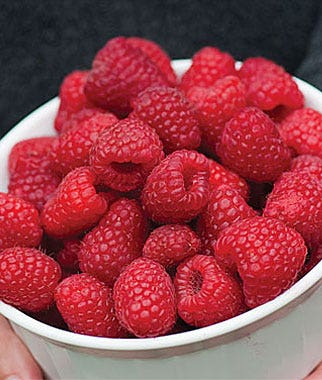We use cookies to give you the best experience on our website. These cookies are completely safe and secure and will never contain any sensitive information. Please read our Privacy Policy. By clicking "Ok" or clicking on any other content, you agree that cookies can be placed.
Fall Raspberries
Patience pays off when you plant fall-bearing raspberries. You’ll have to wait for the harvest, but fall-bearing raspberries are easy to grow and maintain, and birds generally do not compete with you for the abundant crop of berries because they have plenty of other sources of food when the sweet, tender berries ripen.
Fall-bearing raspberries are popular because they are “a solution to all the pruning questions,” says Marlin Bates, a horticulture specialist with University of Missouri Extension. “They’re easy to deal with,” he says. “They come up in the spring and you don’t have to prune them, and they produce on that season’s growth.” In late fall, when leaves begin to die back, “you mow the whole thing down,” he says.
‘Heritage’ and ‘Caroline’ are two traditional fall-bearing raspberry cultivars, both so productive and delicious that gardeners engage in hot debates over which is best. ‘Caroline’ will produce a spring crop, but managing it as a fall-bearing berry simplifies maintenance. New fall-bearing raspberries introduced by hybridizers at Cornell University in New York may come to rival these classics. ‘Crimson Night’ has dark canes and shiny, dark fruit, and produces a heavy crop of sweet berries in fall; ‘Crimson Giant’ is a particularly late raspberry, ripening into October. Market growers who plant ‘Crimson Giant’ in greenhouses can harvest berries even later — in November — and may have to convince their customers that the berries really are local, the hybridizer said when ‘Crimson Giant’ was introduced in 2011.
If you start with six or eight plants in a 4- by 12-foot raised bed, you’ll have 40 plants in about three years (thereafter, thin to about one plant per foot). Each plant will produce up to two quarts of berries — and at the price of raspberries in the grocery store these days, this is a precious crop, indeed.

